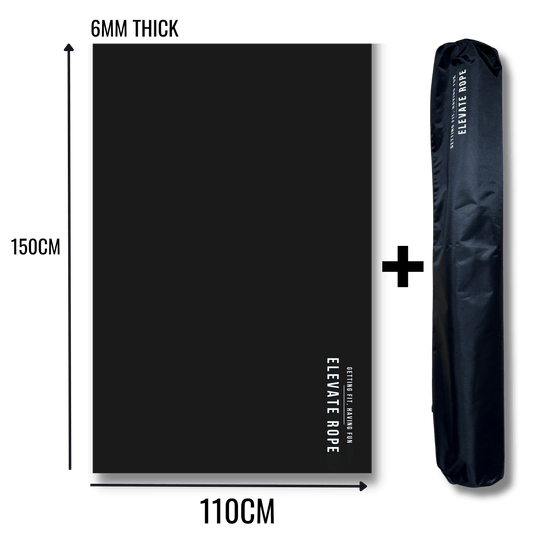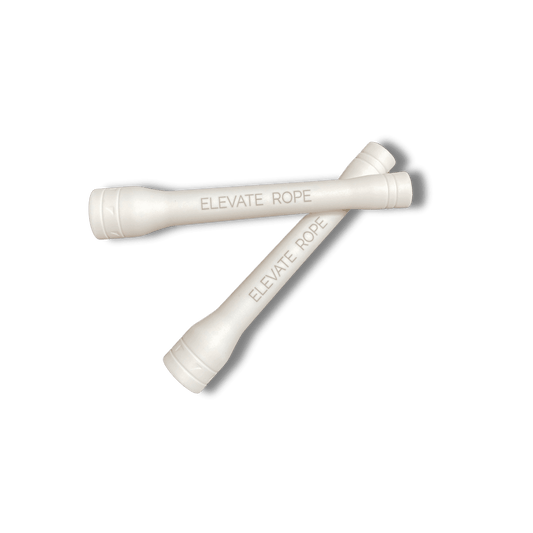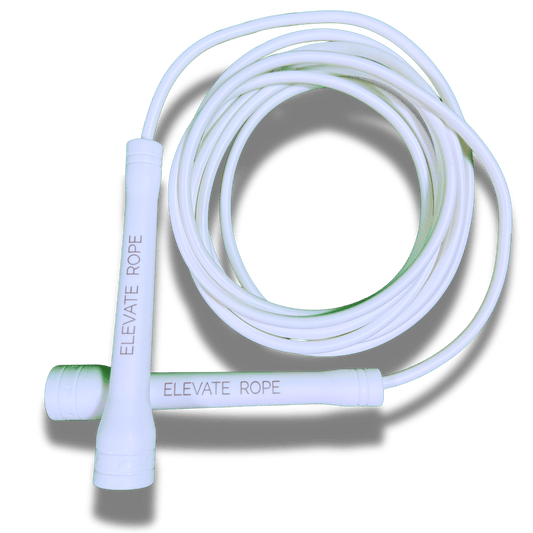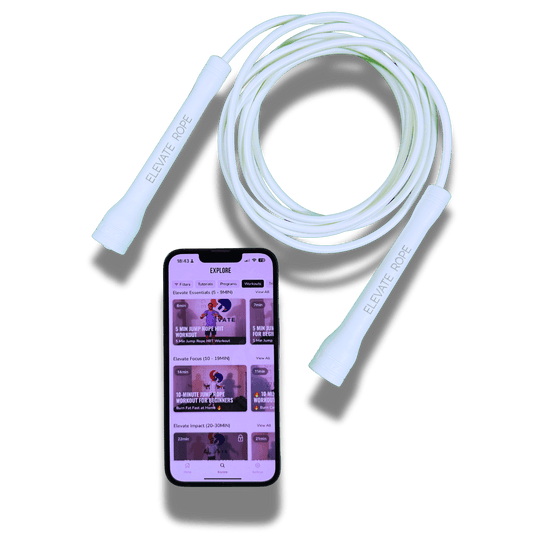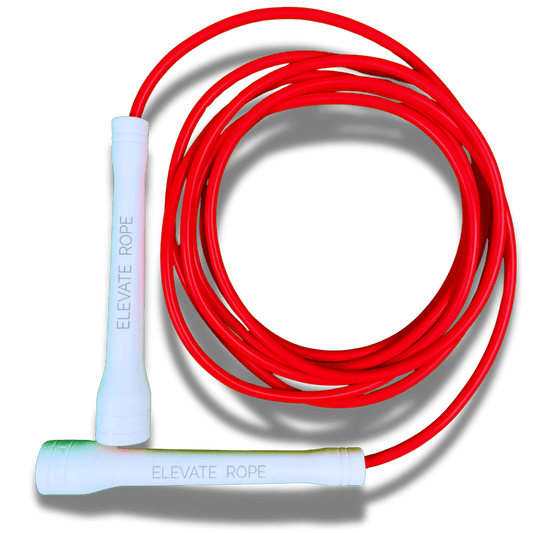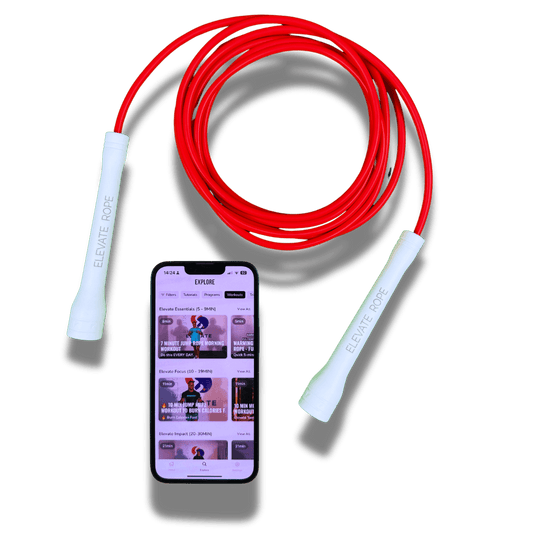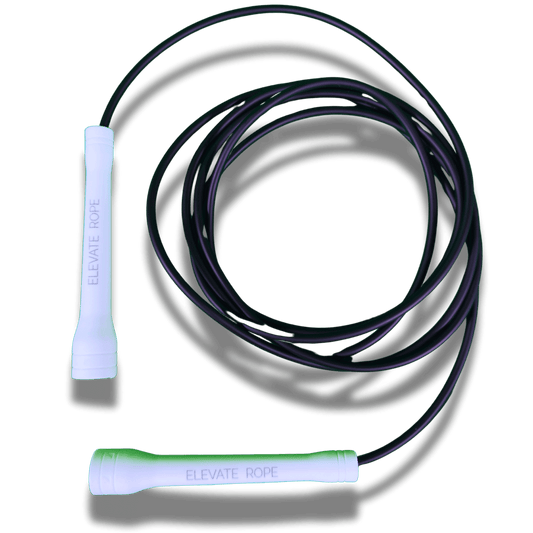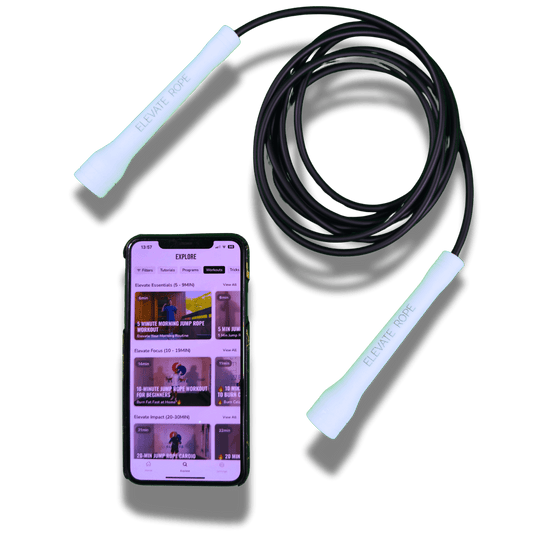Introductie: Waarom Kuitrehabilitatie Cruciaal is na Overjumping

Als je ooit een springtouwsessie hebt afgerond met strakke, pijnlijke kuiten, is de kans groot dat je overjumpte — te hoog, te vaak, of zonder rehab workout voor kuiten. Deze extra belasting dwingt je kuitspieren (de gastrocnemius en soleus) om meer impact op te vangen dan ze aankunnen, wat leidt tot pijn, stijfheid of zelfs een blessure.
Een gerichte rehab workout voor kuiten kan je helpen sneller te herstellen. Met de juiste combinatie van mobiliteitsoefeningen, versterkende oefeningen en geleidelijke terugkeer naar springtouwtraining kun je spierfunctie herstellen, je gewrichten beschermen en zonder tegenslagen weer trainen.
In deze gids leer je:
- Waarom overjumpen kuitpijn veroorzaakt
- De herstelstadia voor kuitrehabilitatie
- Stapsgewijze rehab workout voor kuiten per fase
- Pro tips om herblessure te voorkomen en efficiëntie te verbeteren
Inzicht in kuitblessures door overjumpen
1. Hoe overjumpen de kuiten beschadigt
- Overmatige verticale belasting — Hoger springen dan nodig zet meer kracht op de kuiten
- Slechte landingsmechanica — Landen op stijve benen in plaats van de impact op te vangen met gebogen knieën
- Herhaalde stress zonder rust — Geen hersteldagen tussen intensieve springtouwsessies
2. Veelvoorkomende kuitproblemen door overjumpen
- Grade 1 strain — Milde pijn, strak gevoel, geen grote zwelling
- Grade 2 strain — Matige pijn, zwelling, moeite met afzetten
- Microtears — Kleine spierscheurtjes die verergeren zonder rust
- Achilles overload — Strakke kuiten die aan de pees trekken, met risico op tendinitis
3. Symptomen om op te letten
- Scherpe of doffe kuitpijn tijdens activiteit
- Ochtendstijfheid die vermindert bij beweging
- Gevoeligheid bij het indrukken van de spierbuik
- Verlies van veerkracht of explosieve kracht
Hersteltijdlijn & fasen
Fase 1 — Acute fase (Dagen 1–3)
- Doel: Verminder ontsteking en pijn
- Acties: Rust, ijs, compressiemouw, benen boven hartniveau heffen
- Vermijd: Springen, rennen of agressief rekken
Fase 2 — Subacute fase (Dagen 4–14)
- Doel: Herstel zachte mobiliteit en activeer spieren zonder pijn
- Acties: Lichte stretches, enkelmobiliteit, isometrische kuitspierhoudingen
- Vermijd: Explosieve bewegingen of zware impact
Fase 3 — Heropbouwfase (Weken 2–6)
- Doel: Versterk de kuiten en verbeter de stabiliteit
- Acties: Kuitheffingen, balans oefeningen, excentrische hielverlagingen
- Geleidelijke terugkeer: Lichte springtouw oefeningen met minimale hoogte en volume
Uitgebreide stapsgewijze kuitrevalidatietraining
Warming-up (5–7 min)
Doel: Verhoog de bloedtoevoer en bereid weefsels voor op beweging
- Enkelcirkels — 10 per richting
- Zittende handdoekstretch — 30 sec per kant
- Heel-to-toe walking — 1 min vooruit en achteruit
Mobiliteitsoefeningen (5 min)
Doel: Flexibiliteit en bewegingsbereik herstellen
- Wall calf stretch — 30 sec per been
- Bent-knee soleus stretch — 30 sec per been
- Foam rolling calves — 30 sec per kant (langzame, gecontroleerde bewegingen)
Kracht & Stabiliteit (10–12 min)
Doel: Spier- en gewrichtscontrole herbouwen
- Isometric calf raises — 20–30 sec vasthouden x 3 sets
- Eccentric heel drops — 8–10 herhalingen per been, langzaam 3–4 sec laten zakken
- Single-leg balance on mat — 20 sec vasthouden x 3 per been
Licht touwwerk (week 3+)
Doel: Plyometrie geleidelijk herintroduceren zonder overbelasting
- Side swings without jumping — 1–2 min om het ritme op te warmen
- Low single bounce — 10–15 sec sessies, 30 sec rust tussen sets
💡 Pro Tip: Als de pijn terugkeert tijdens touwwerk, stop dan onmiddellijk en ga 3–5 dagen terug naar mobiliteits- en kracht oefeningen voordat je het opnieuw probeert.
Uitrusting die je herstel kan ondersteunen

- Elevate Performance Mat — Beschermt gewrichten en vermindert impact tijdens vroege terugkeer naar touw
- Lightweight PVC Rope — Makkelijker voor kuiten en pezen dan zware touwen
- Compression Sleeves — Verbeter de circulatie, verminder zwelling en houd spieren warm
- Foam Roller / Massagebal — Richt je op diepe weefselspanning in de kuiten en omliggende spieren
Fouten om te vermijden tijdens de revalidatieworkout voor kuiten
- Te snel terugkeren naar intensieve training — Leidt tot herhaalde blessurecycli
- Warming-ups overslaan — Koude spieren zijn gevoeliger voor verrekkingen
- Pijnsignalen negeren — Revalidatie moet uitdagend zijn maar nooit pijnlijk
- Te snel een zwaar touw gebruiken — Verhoogt de belasting op herstellende spieren
Preventietips voor de toekomst
- Houd de springhoogte net boven de color clearance
- Land zachtjes op de bal van je voeten met licht gebogen knieën
- Neem kuitmobiliteitsoefeningen op in elke warming-up en cooling-down
- Verhoog de springtouwvolume geleidelijk (voeg niet meer dan 10% per week toe)
Conclusie
Herstellen van kuitpijn na overmatig springen gaat niet over minder doen — het gaat over de juiste dingen op de juiste volgorde doen. Door deze revalidatieworkout voor kuiten te volgen, kun je pijn verminderen, kracht opbouwen en voorkomen dat dezelfde blessure opnieuw gebeurt.
Zorg nu voor je kuiten, en zij zorgen later voor je prestaties.
